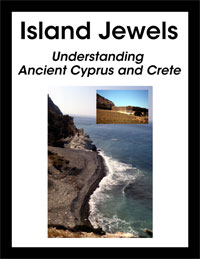
Who discovered Iceland? The coastline of this far northern island. Courtesy Bernd Thaller from Graz, Austria, CC BY 2.0, via Wikimedia Commons.
While the Norse settler Naddodd is frequently credited with the discovery of Iceland, a different theory suggests that it might have actually been the ancient Greeks over a thousand years earlier. According to this theory, Iceland can be identified as the famed island Thule, discovered by the Greek geographer Pytheas. While the evidence in favor of this theory is circumstantial, an article published in The Housman Society Journal suggests a new line of evidence.

Thule, Thymele, and Discovering Iceland
Although mentioned by many later Greek and Roman writers, the island of Thule is suggested to have been discovered by Greek geographer Pytheas in the fourth century BCE, when he sailed north from the farthest point of the British Isles for six days. Upon seeing this island surrounded by ice, Pytheas named it Thule. This mysterious island has been an enigma among scholars for centuries, with some assuming that it was the Shetlands, Faroes, or perhaps simply a myth like Atlantis. Yet Andrew Breeze, an epigrapher at the University of Pamplona, argues the famous Thule was instead Iceland. This theory is largely driven by a new linguistic understanding of the Greek name.
While the name Thule has no meaning in Greek, Breeze suggests that it could be a scribal error for the original name Thymele, which means “altar” in ancient Greek. This name could perfectly fit the southern coast of Iceland. “When Pytheas and his men saw the great mass of Iceland arising on the horizon, with clouds and mists rising from it, and perhaps columns of smoke and ash from Hekla and other volcanoes, he thought of the altar in a Greek temple, with fire on top and vapors rising from animals sacrificed there,” Breeze told the Greek Reporter.
Picturing Iceland as a giant altar also fits well with what we know of ancient Greek altars, according to Breeze. Many of these altars were incredibly large, with the one at Pergamum being 40 feet tall, and one at Syracuse was said to have been 600 feet long.
Of course, Breeze’s theory remains purely circumstantial, as there is no archaeological evidence for any people in Iceland before the end of the first millennium CE, when supposedly Irish monks—not the Norse—settled there. The identification of Thule with Iceland is further complicated by the fact that none of the original writings of Pytheas still exist, as they were likely lost when the Library of Alexandria burned down. Instead, Pytheas’s writing can only be recreated through quotes and references from other ancient writers such as Strabo and Pliny the Elder.
Learn more in Bible History Daily:
All-Access members, read more in the BAS Library:
The Ancient Library of Alexandria
Were living Children Sacrificed to the Gods? Yes
Not a BAS Library or All-Access Member yet? Join today.The post Who Discovered Iceland? appeared first on Biblical Archaeology Society.

0 Commentaires